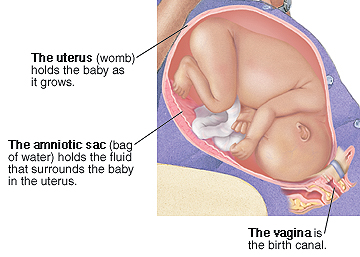What Is Group B Strep?
Group B strep (streptococcus) is a common bacteria. It can grow in a woman's vagina, rectum, or urinary tract. It is almost always harmless in adults. But in rare cases, a woman who has group B strep can infect her baby during the birth. Infection can cause serious illness in the newborn. The good news is that treating the mother during labor reduces the risk of the baby becoming infected. And if a newborn is infected, the infection can be treated.
Facts About Group B Strep
Learning more about group B strep can help you understand how testing and treatment can help. Here are some basic facts about group B strep:
-
It is not a sexually transmitted disease.
-
It is not the same as strep throat. (This is caused by group A strep.)
-
It often has no symptoms and may cause no problems in adults.
-
Test results can be misleading. They may be positive one week and negative the next week.
-
Group B strep can be transmitted during vaginal delivery. It cannot be passed during cesarean (surgical) birth.
-
A mother with group B strep rarely infects her newborn. (Infection occurs only about 1% to 2% of the time.)
-
When a mother is treated during labor and delivery, her baby almost never becomes infected.
-
Certain factors during pregnancy increase the risk of a baby becoming infected.
Possible Effects on Your Baby
Group B strep can infect the blood. It can also cause inflammation of the baby's lungs, brain, or spinal cord. Long-term effects can include blindness, deafness, mental retardation, or cerebral palsy. And in rare cases, infection causes death. Infection is most often detected soon after the baby is born.

How Your Baby May Become Infected
Group B strep often lives in the vagina or rectum. If the amniotic sac breaks early, bacteria from the vagina can travel to the uterus, reaching the baby. Or, as the baby passes through the birth canal, it can come in contact with the bacteria. In rare cases, group B strep can also be passed to the baby after delivery. The source of this type of infection is not well understood.
What Increases the Risk?
Certain risk factors increase the chance that a baby will be infected. They include:
-
Breaking or leaking of the amniotic sac earlier than 37 weeks gestation
-
Labor earlier than 37 weeks gestation
-
Breaking of the amniotic sac more than 18 hours before labor begins
-
Fever during labor
-
A urinary tract infection with group B strep at any point in the pregnancy
-
A previous baby born with a group B strep infection